7 tips for avoiding food poisoning while traveling
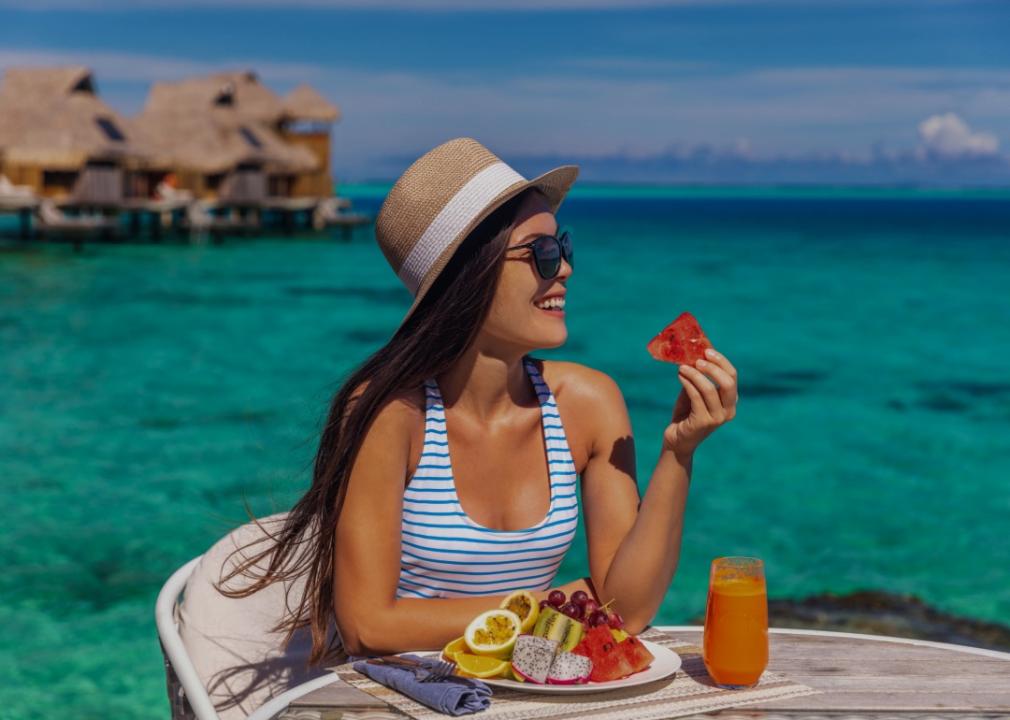
Shutterstock // Maridav
7 tips for avoiding food poisoning while traveling
A youthful woman in a straw hat lounges al fresco at a table beside blue waters, delicately grasping a slice of watermelon, with a platter of fresh, vibrant fruits in the the foreground.
Why do we travel? Novelist Gustave Flaubert famously said, “Travel makes one modest. You see what a tiny place you occupy in the world.” Travel journalist Bill Bryson once remarked on his love for the childlike wonder that comes with being in a new country. And Hans Christian Andersen, author of “The Little Mermaid,” simply said, “To travel is to live.”
For many, traveling is an opportunity to leave behind the drudgery of daily life, plunge into an exciting new world, try new things, make new friends, and forge indelible memories. The culinary experience, in particular, is one of the many joys of traveling. From high-end restaurants to street food stalls, every traveler knows the irresistible charm of authentic local cuisine.
However, there’s a flip side to an adventurous palate: One wrong bite can lead to food poisoning, leaving you feeling sick and rushing to the bathroom all day. Rather than avoid the local cuisine completely and risk missing out on experiences that can elevate your trip, it is important to proceed with care and common sense.
To help you make the right choices while dining on vacation, FoodReady consulted health guidelines from various sources and compiled a list of tips for avoiding food poisoning while traveling.
![]()
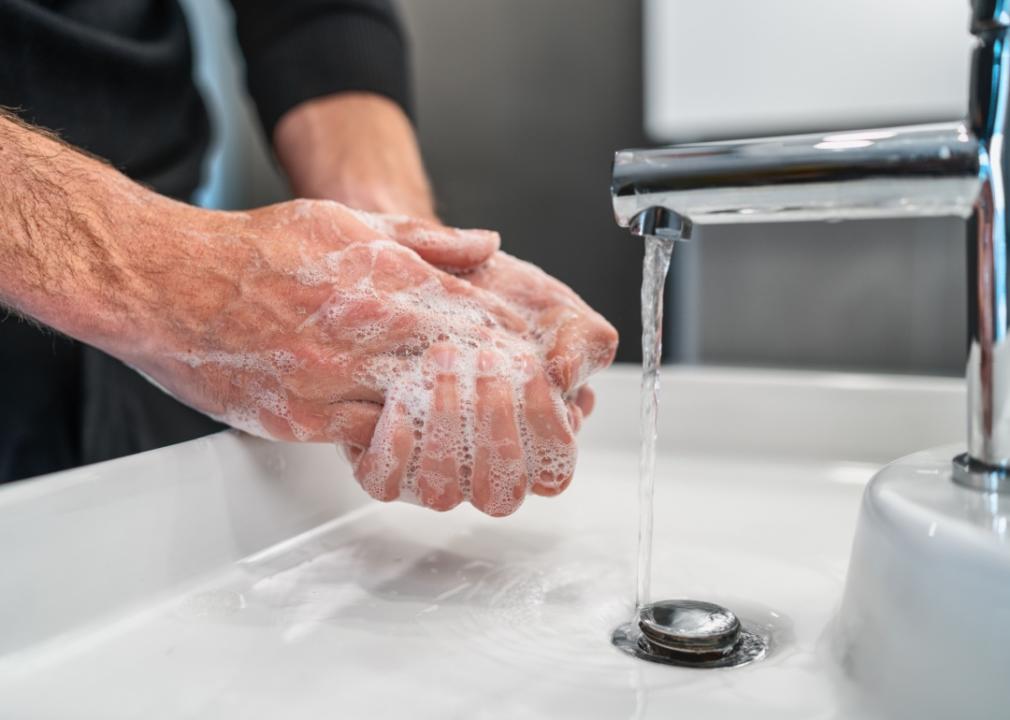
Shutetrstock // Maridav
Wash hands with soap and water
Man’s hands engaged in the thorough process of washing with soap and water.
Handwashing is one of the easiest ways to avoid getting sick while you’re traveling. You should always wash your hands with soap and water before eating. Follow the recommended guidelines from the Centers for Disease Control and Prevention by washing your hands with enough soap to cover all surfaces for about one minute. Try humming “Happy Birthday” twice to get the timing right. If soap and water aren’t available, use a hand sanitizer containing at least 60% alcohol.
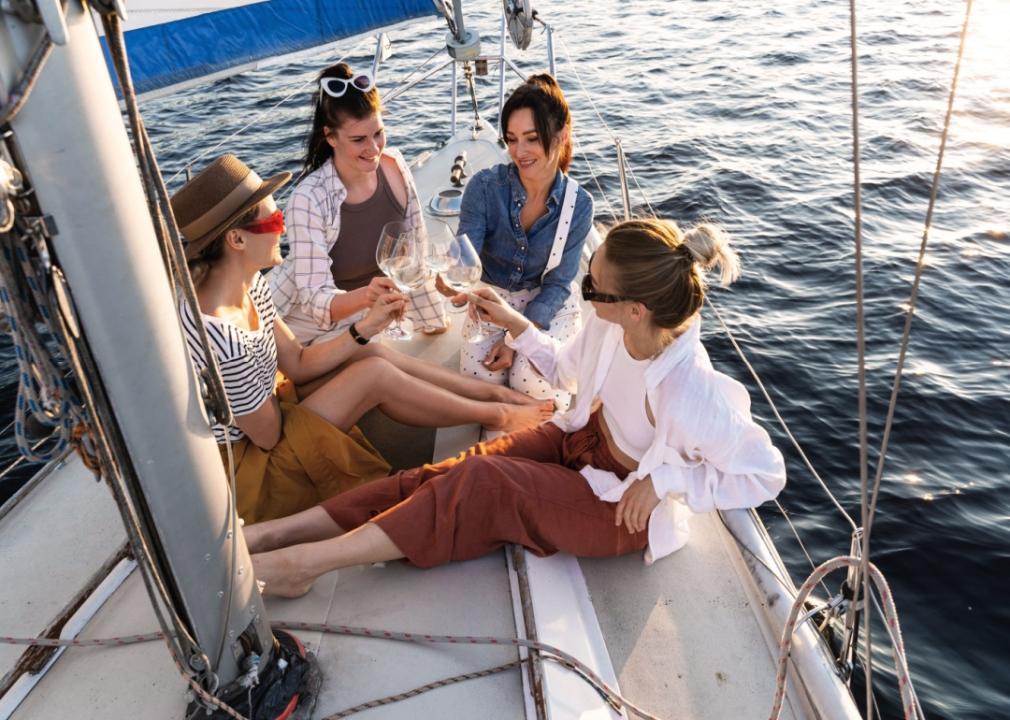
Shuttetrstock // BLACKDAY
Avoid ice in places with unsafe water
Four youthful women recline on a boat, each gracefully holding a wine glass.
Different countries have varying standards for tap water. Many travelers know to avoid tap water if it’s not made for drinking, but you might overlook that rule of thumb when it comes to ice. If you’re unsure where the ice comes from, steer clear of iced drinks, which likely contain ice cubes made from tap water. Tap water can sometimes get contaminated with harmful substances that might make you sick. If you’re craving an iced drink, put bottled water in the fridge or fill an ice tray with disinfected or filtered water instead.
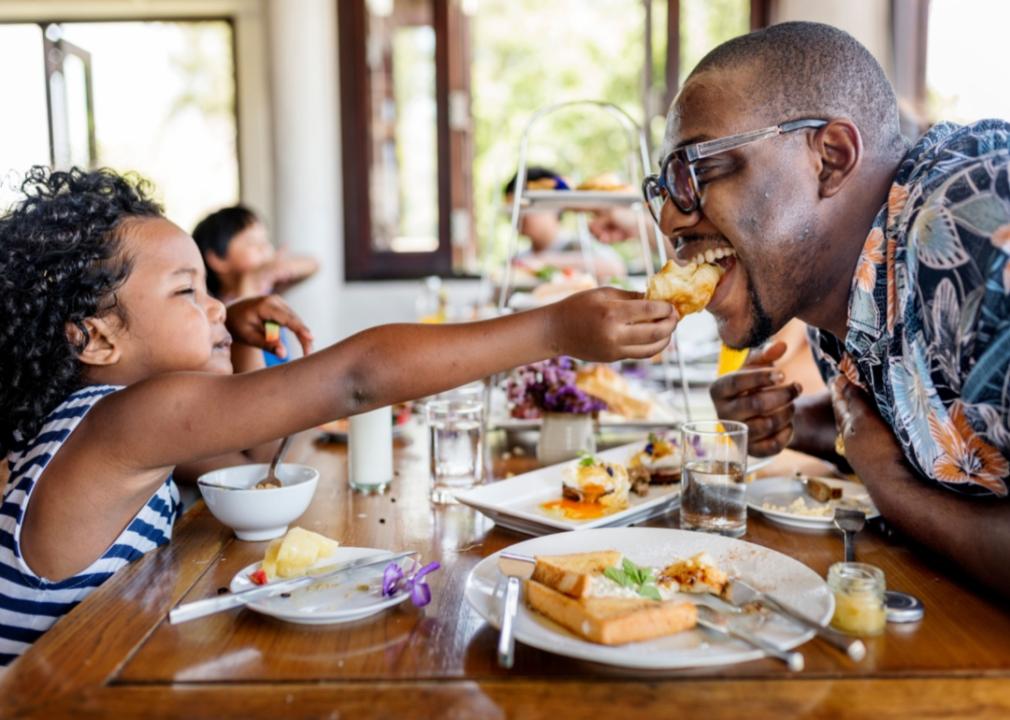
Shuttetrstock // Rawpixel.com
Limit raw food consumption
An African American girl tenderly feeds her father a morsel of food in a restaurant.
Want to try a piece of sashimi or raw milk cheese on your trip? Better think twice. Raw food, whether it’s uncooked or unpasteurized, is always risky. Cooking food at high temperatures can kill germs while raw or undercooked food can get exposed to pathogens, like salmonella or E. coli. Even finely shredded salads or precut fruits can get contaminated during preparation. The best solution is to peel your fruits and vegetables or avoid raw food altogether.
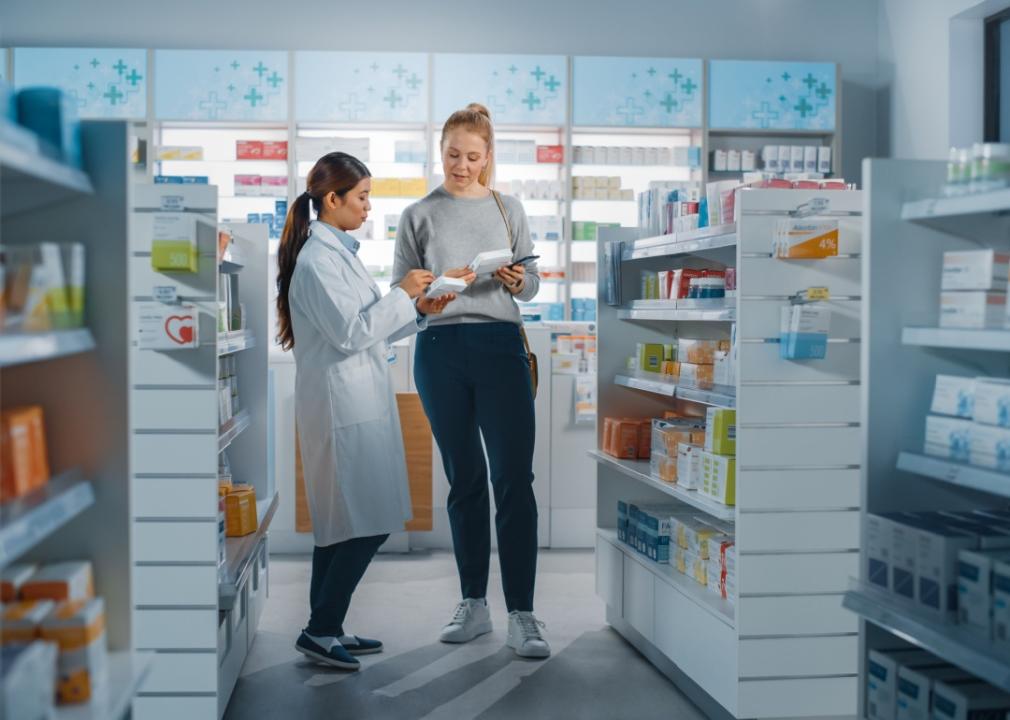
Shuttetrstock // Gorodenkoff
Pack some loperamide
A statuesque caucasian woman stands alongside a pharmacist in a pharmacy holding a pack of medication.
Nothing can ruin a vacation quite like an upset stomach. Traveler’s diarrhea is among the most common travel-related illnesses. Luckily, there is relief in the form of loperamide, a medicine used to treat diarrhea by slowing down movement in the intestines. It can alleviate symptoms and reduce the frequency of trips to the bathroom. Pack it with you or keep the name in mind in case you or a fellow traveler need to request a prescription from a doctor at your destination.
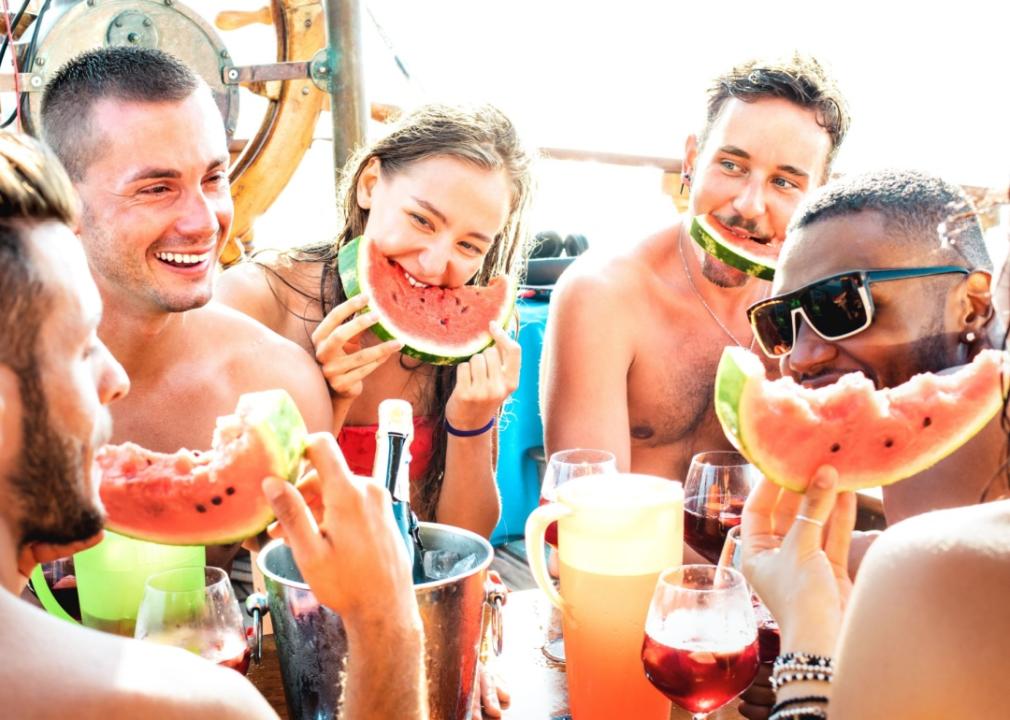
Shuttetrstock // View Apart
Stick to the 2-hour rule
A group of young friends smiling while eating fresh watermelon slices outdoors.
Thinking about enjoying a picnic or a buffet spread on your trip? Sounds dreamy, except that when food is left out for too long, it can go bad. The best way to avoid food poisoning while traveling is to stick with the two-hour rule. When food is left out for more than two hours, guidelines suggest it is no longer safe to eat. This is especially true for perishables like meat, dairy, cut fruit, and seafood. If the temperature outside is above 90 F (around 32 C), food needs to be tossed within one hour.
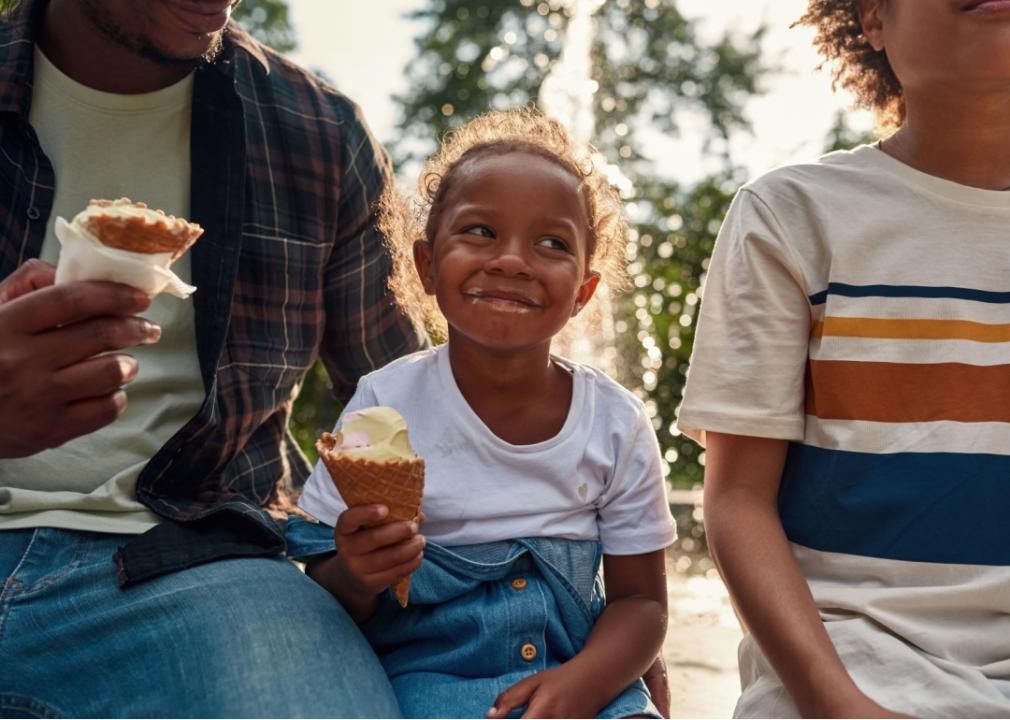
Shuttetrstock // BAZA Production
Be cautious about dairy products
A joyful young black girl is holding an ice cream cone, seated between an adult man and a boy.
Milk, yogurt, and cheesecakes are delicious, sure, but with more live bacteria than most perishable foods, they could make you sick. Check the expiry date before consuming any dairy products and opt for the pasteurized variety in sealed packages. Dairy products like milk are pasteurized when they are heated to high temperatures to kill harmful bacteria. Ice cream can also be a one-way ticket to an upset stomach if contaminated or refrozen, so check the package before taking a chilling bite!
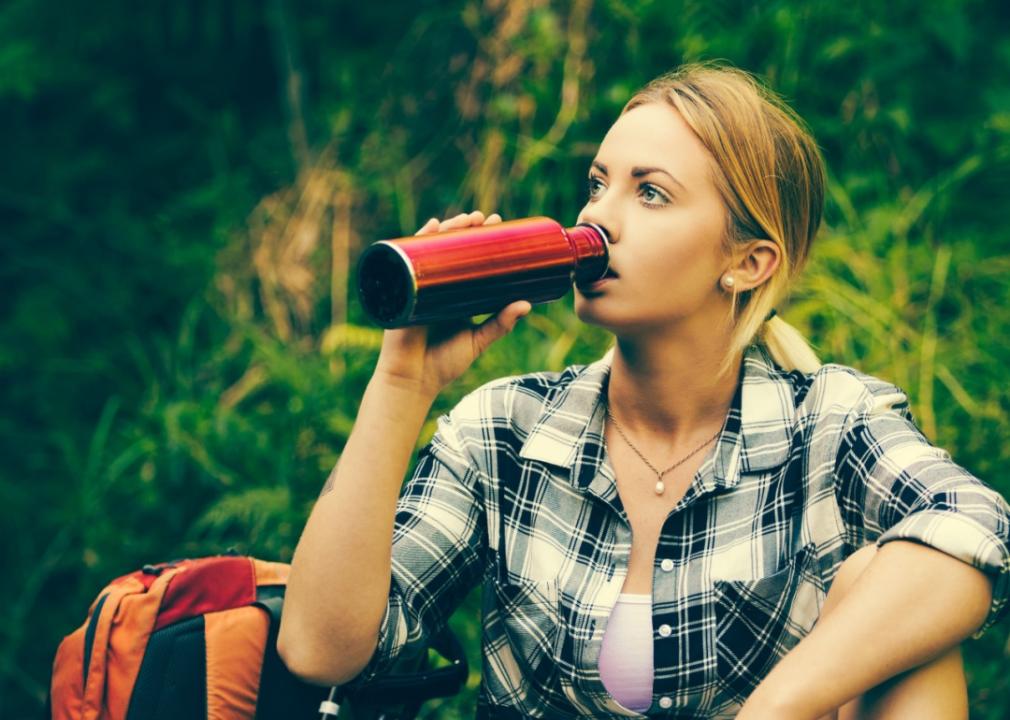
Shuttetrstock // Jason Stitt
Disinfect your water
Hiker woman resting, drinking water out of reusable bottle.
Finally, stay hydrated, but make sure the water you drink is clean. There are several ways to treat water while you are on vacation. Disinfect tap water by boiling, filtering, or chemically treating it. Boiling is the best method since it can kill viruses, bacteria, and parasites, whereas most portable water filters can only filter out parasites. Bring the water to a full roiling boil for at least one minute. If boiling is not an option, opt for bottled water from a reliable source.
By sticking to a few cardinal rules, you can enjoy the sights and delights of the world—rather than the tiles of your hotel bathroom—on your travels.
Story editing by Zeynep Güler-Tuck. Copy editing by Tim Bruns. Photo selection by Ania Antecka.
This story originally appeared on FoodReady and was produced and distributed in partnership with Stacker Studio.
